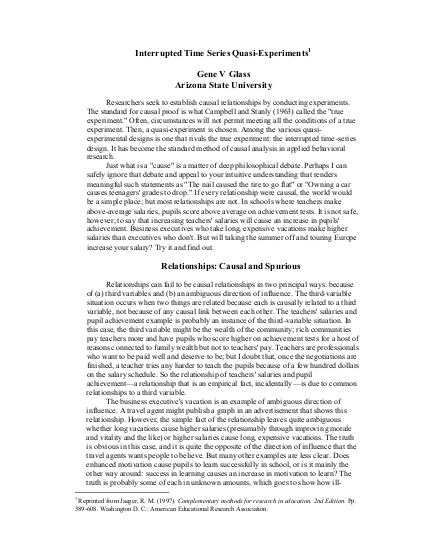
Researchers seek to establish causal relationships by conducting experiments. The standard for causal proof is what Campbell and Stanly (1963) called the "true experiment." Often, circumstances will not permit meeting all the conditions of a true experiment. Then, a quasi-experiment is chosen. Among the various quasiexperimental designs is one that rivals the true experiment: the interrupted time-series design. It has become the standard method of causal analysis in applied behavioral research. Just what is a "cause" is a matter of deep philosophical debate. Perhaps I can safely ignore that debate and appeal to your intuitive understanding that renders meaningful such statements as "The nail caused the tire to go flat" or "Owning a car causes teenagers' grades to drop." If every relationship were causal, the world would be a simple place; but most relationships are not. In schools where teachers make above-average salaries, pupils score above average on achievement tests. It is not safe, however, to say that increasing teachers' salaries will cause an increase in pupils' achievement. Business executives who take long, expensive vacations make higher salaries than executives who don't. But will taking the summer off and touring Europe increase your salary? Try it and find out.